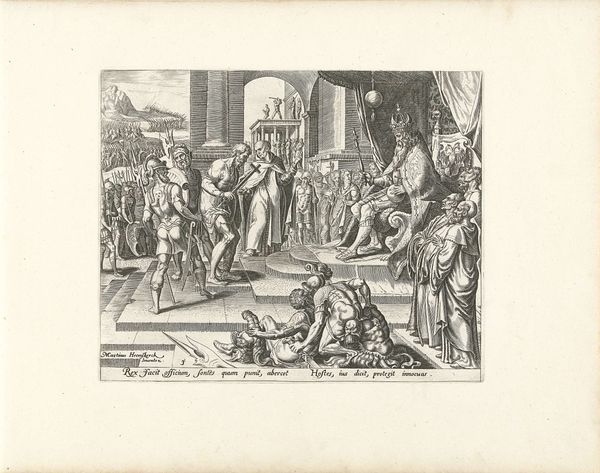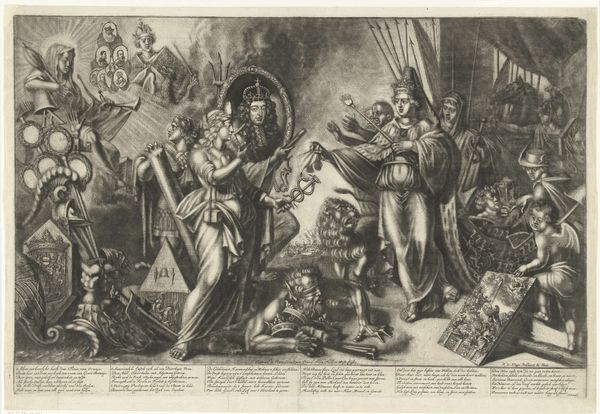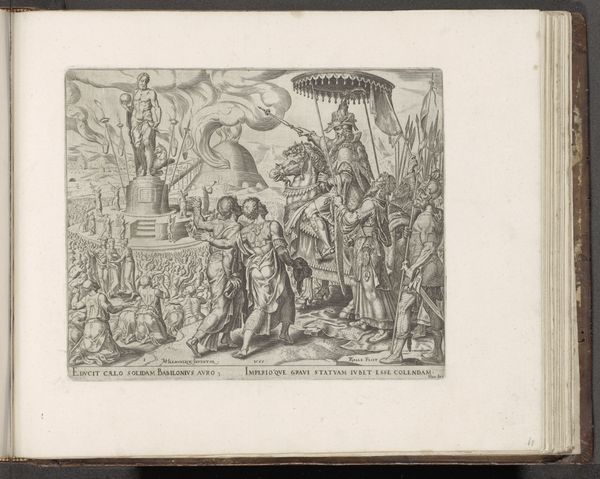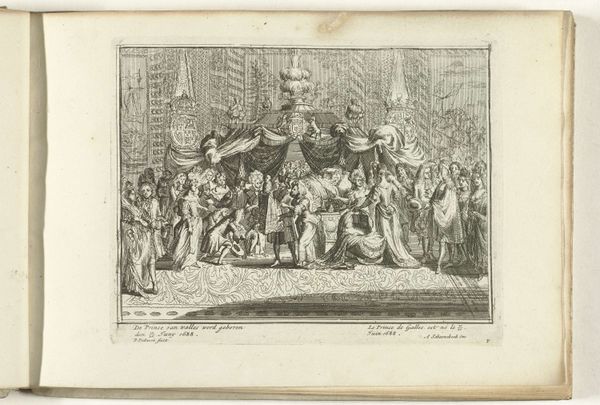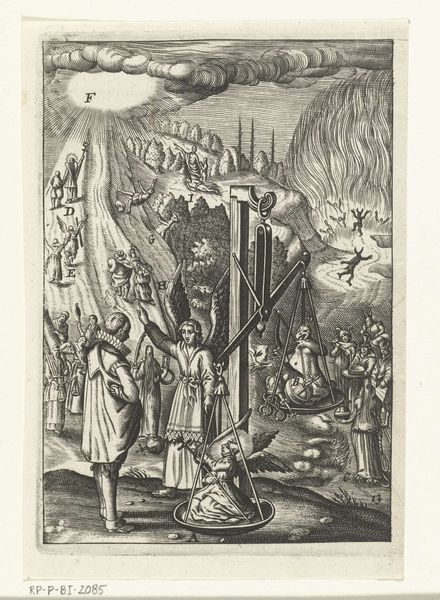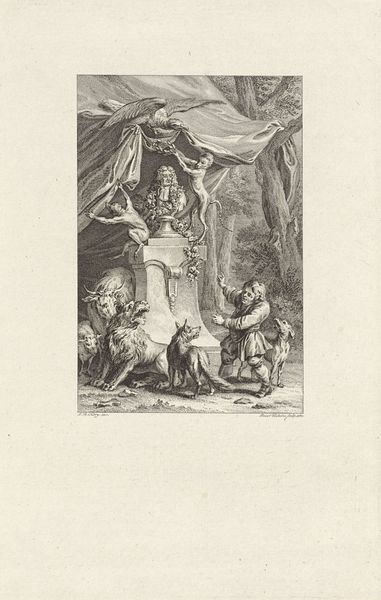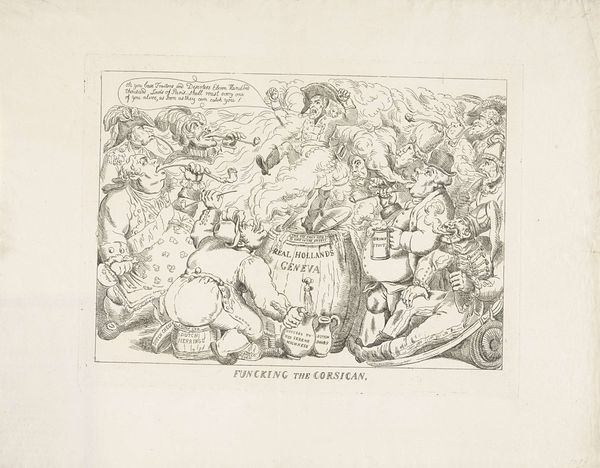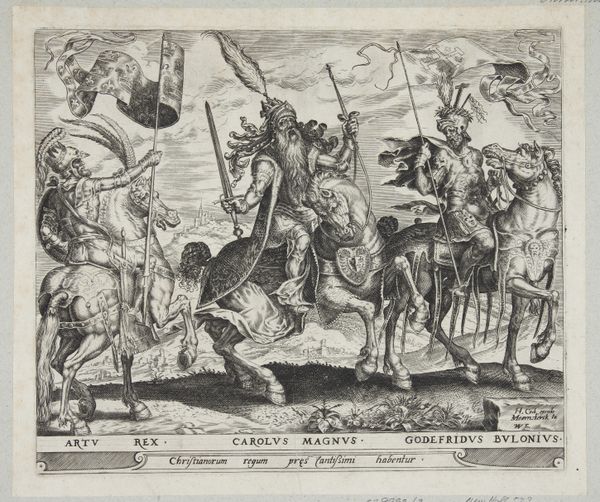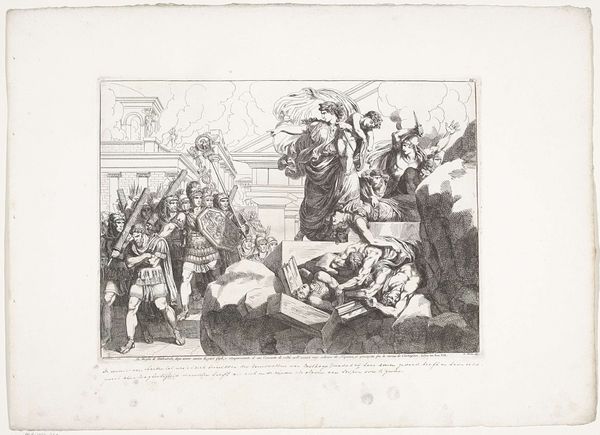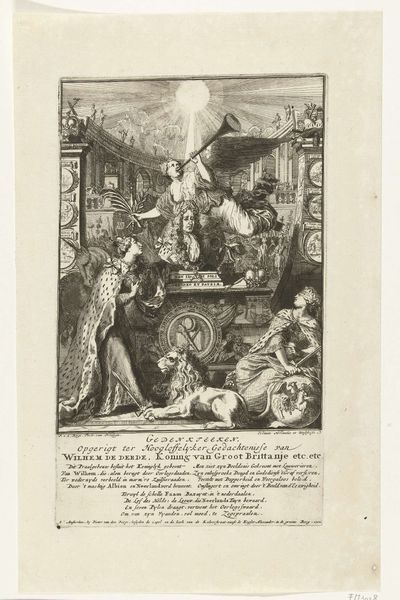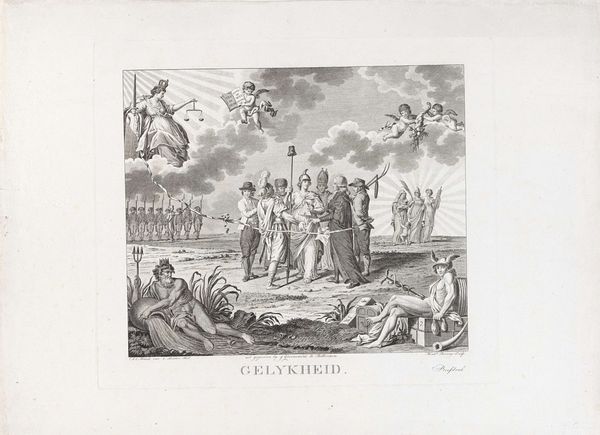
Dimensions: height 215 mm, width 300 mm
Copyright: Rijks Museum: Open Domain
Curator: Before us, we have an engraving dating from 1877-1879 by Emrik and Binger titled "Spotprent op Cromwell, 1656." The print resides here in the Rijksmuseum. Editor: My immediate impression is one of stark contrast and almost feverish energy. The monochromatic palette creates this rather striking drama. What’s your reading of this historical piece? Curator: I see a commentary on power and religious authority in 17th-century Netherlands. Cromwell, astride a grotesque beast, embodies the perceived threat to established Catholic figures represented to his left. This resonates deeply with the sociopolitical tensions of the era, when religious and national identities were fiercely contested. Editor: The composition is striking—how the artist balances these figures. The engraving's linearity gives it a somewhat ethereal feel despite the heavy subject matter. Look at the almost caricaturist style—there's intent there to diminish. Curator: Precisely. The almost comical representation of Cromwell alongside symbols of religious persecution suggests the artists sought to critique his regime's policies. It’s rooted in intersectional understanding of power, specifically challenging his role and the religious authority he represented. Editor: Agreed. There is intent. From a formalist perspective, the use of stark contrast between light and shadow amplifies the emotional weight of the satire. Even if it's heavy-handed. The detailed lines define the subjects here with almost photographic precision for an engraving. Curator: I'd add it is also playing on xenophobia – Cromwell being "othered." His perceived strangeness feeding the beastly representations we see here today. It challenges notions of a homogenous cultural and religious narrative. Editor: I think so, it is about him versus everyone else. Still, you've offered quite a narrative to unravel regarding the work, giving insights that go far beyond simply the subject. Curator: Well, there's so much layered context—narratives intertwined with political struggles, societal anxieties about shifting powers during and following Cromwell’s era—which demands interpretation. Editor: All points well considered. Thank you.
Comments
No comments
Be the first to comment and join the conversation on the ultimate creative platform.
